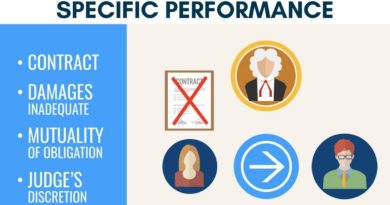What Is an Asset-Based Approach to Business Valuation?
Understanding the current value of a company can be an essential part of valuing shares in an unfair prejudice petition. An Asset-Based Approach to valuation is one of the different approaches that can be taken to maximise, or minimise, value for shareholders or investors involved in a dispute.
The value of a company is dependent on internal factors and market forces and is constantly in flux to some degree. Fluctuations in value affect stakeholders, investors, and shareholders both positively and negatively.
Valuation of a company’s assets often precedes a sale or transfer of shares, and so this often arises in the context of an unfair prejudice petition, or shareholder dispute.
There are several commonly used valuation methods, including:
Due to insufficient impartiality and expertise, business owners are frequently not best placed to undertake a valuation. In such cases, a company or third-party may hire an expert. We typically work very closely with expert valuers including accountants, positioning our clients as shareholders or investors, for the best possible outcome.
What Is an Asset-Based Approach?
An asset-based approach to business valuation calculates the net value of a company’s assets less its outstanding liabilities.
Its intention is to establish the cost of developing a similar business in the current marketplace or replacing all its assets.
Business assets can include tangibles like property, plant and machinery, stock, and cash. Intangible assets may include goodwill, trademarks, and other intellectual property (IP).
Several different formulae are deployed to calculate Net Asset Value (NAV).
The two most commonly used asset based methods are asset accumulation and the excess earnings valuation method. NAV can be determined by either one or both in tandem.
It’s crucial to note that an asset-based valuation — or any valuation — is not the equivalent of a company’s selling price. Many additional factors determine the actual price paid if a business does change hands.
For example, a keen investor looking to absorb a competitor or replace losses may pay a premium price.
A degree of subjectivity can also be ascribed to the individual valuer.
Types of Asset-Based Valuation Methods
Asset Accumulation Valuation
The asset accumulation method does just what it says on the tin. A valuer gathers all the liabilities and assets of the business and attributes a financial worth to each. In practice, it’s very similar to the balance sheet.
The company’s valuation is the difference between the two figures; however, the devil is definitely in the details.
The asset accumulation valuation method typically requires the input of expert valuers who identify each asset and liability and use an established mechanism to assign value.
Valuers have to grapple with items not present on the balance sheet — like contingent liabilities and intangible assets, which can be challenging to assess.
Excess Earnings Valuation
The excess earnings valuation method combines asset-based and income-based models, blending asset and income data.
Excess earnings valuations use two capitalisation rates to quantify tangible and intangible assets.
The process extends beyond assessing the company’s assets and liabilities to determine the business’s goodwill value. Earnings are used an as input to help calculate the value of goodwill.
The excess earnings method is employed to value strong private businesses with demonstrable goodwill — typically professional firms and practices or service providers like engineers and architects.
What Are the Factors That Influence Asset-Based Valuation?
No matter what valuation method is used, many factors come into play. Below are some of the most crucial.
The Purpose Behind the Valuation
Some valuations are designed to attract investors and support a pitch for capital and/or expertise.
Others are necessary when a business is on the rocks and the valuation is for liquidation purposes.
A company or partnership may also require a valuation because a stakeholder wants to leave and needs an up-to-date valuation of their share.
Asset-based valuations for liquidation tend to be more conservative as time is typically of the essence. Due to urgency, the valuer will assume that assets may sell for less than market value.
Age of the Business
It’s much harder to value a business in its early stages than a long-established company with a track record. Lack of historical data makes an asset-based valuation difficult to achieve.
Industry or Sector
Understanding the sector a company operates in is essential when considering valuation. The size of the sector and its status — whether it’s an emerging market or a well-established area — impacts an asset-based valuation.
Market Size
A large market usually helps attract potential investors; a company facing liquidation may have the option of several buyers — generally, the bigger the market, the higher the possible valuation.
However, it can be hard to attract investors or buyers if the market is oversaturated, irrespective of its size.
Comparable Companies and Competitors
Similar companies in the marketplace help expert valuers plan potential exit scenarios. This sounds like putting the cart before the horse, but working back towards a valuation is sometimes easier.
Timeline
The most likely reason for a timeline to impact a valuation is urgency. A company facing insolvency — or rushing to entice potential investors — may be in a rush to establish its value. This can also apply to shareholder disputes from time to time.
Generally, urgency leads to lower valuations than taking a more time-consuming and nuanced approach.
Strategy
Down valuing to a company to lure investors can sometimes create the wrong impression even though, theoretically, a lower barrier to entry should expand the potential funding pool.
Valuation isn’t an exact science. It gives companies some leeway to be strategic in how high (or low) the business is valued.
General Economic Conditions
A weakening economy or a full-blown recession affects interest in high-risk company investment and fledgling businesses, leading to lower valuations than during a boom time.
What Are the Pros and Cons of the Asset-Based Valuation Approach?
Pros
Asset-based valuation offers scope to use market values rather than balance sheet data alone, which can present a more favourable picture and reflect current market conditions.
Depreciation is an inherent feature of balance sheet valuations, reflecting that assets decrease in value over time. Consequently, an asset-based valuation that aligns with market value is often fairer and more representative.
An analyst can include intangible assets that don’t appear on the balance sheet in asset-based valuations.
Trade secrets, trademarks, and patents are excellent examples of intellectual property which doesn’t appear on a balance sheet but reflect real business value.
Intangible assets are crucial to include in an asset-based valuation to accurately predict what a company would sell for in the current market.
The formulae experts employ in an asset-based approach to valuations are reasonably straightforward and easy to explain.
Asset-based valuations are flexible and representative of a company’s true value because there’s sufficient scope to interpret the worth of assets and liabilities.
Cons
Valuing assets in real-time market conditions means valuing liabilities similarly. This can adversely affect the final calculation, with some liabilities appearing worse or higher than on a balance sheet.
Also, the flexibility of asset-based valuation allows for the inclusion of provisional liabilities like unresolved legal action or disputes that wouldn’t routinely appear on the balance sheet.
Intangible assets are complex to value in an asset-based approach. Typically, arriving at an accurate figure requires specialist expertise from valuers who use complex techniques beyond the remit of the average business owner.
Asset-based valuation doesn’t always accurately represent intangible assets, particularly for companies that derive much of their value from brand or intellectual property.
Asset-based valuations also disregard a company’s future earnings, which can make a significant difference compared to valuing a company item by item.
Companies with significant future earning potential or growth prospects will suffer under an asset-based valuation. This is particularly true for professional service firms like lawyers and accountants where goodwill is a primary asset.
Asset-based valuation is complicated. It’s a process that usually requires input from an independent expert. For shareholders in a dispute this can present both a risk, and an opportunity.
Our commercial litigation team at Helix Law are experienced in handling and advising on shareholder litigation and disputes– including considering issues regarding valuation models most appropriate. This is most often in conjunction with other experts (such as accountancy experts), as necessary.
FAQs
What Is the International Valuation Standards Council?
The International Valuation Standards Council (IVSC) is a global not-for-profit organisation that establishes international measures to help valuers and companies accurately assess business worth. In real terms, most businesses or liquidators use local or regional professionals for expert valuations. These specialists may apply the IVSC benchmarks as part of the process.
What Is the Formula of The Asset-Based Valuation Approach?
The formula to calculate a company value is Total Asset Value minus Total Liabilities equals Net Asset Value (NAV).
The valuation process requires identifying and valuing tangible and intangible assets and is helpful in investment analysis, acquisitions, mergers, and liquidations.
Conclusion
Many companies use the asset-based valuation approach if they’re experiencing liquidity issues because it’s the most accurate. However, NAV applies to other valuation scenarios, too.
Asset-based valuations help creditors and business owners establish the value of company assets. There are numerous scenarios where this information (and the model used) can be vital, including most often in our work- where there is a shareholder dispute and/or an unfair prejudice petition has been commenced.
Whilst the concept is straightforward in principle, the valuer needs the requisite knowledge and experience to ensure accuracy.
If you’re a business owner or shareholder and you find yourself in a conflict situation where a valuation is required, contact a member of our commercial litigation team at Helix Law.
We act nationally in disputes often valued in millions/tens of millions. We’re happy to back our own advice and can help with dispute resolution via our specialist team who have access to proven experts. 98% of potential clients receive a response in one hour or less.






